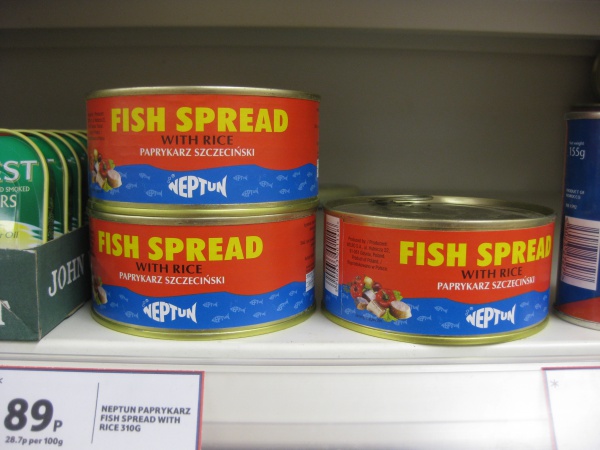Facts About Paprykarz szczeciński
Paprykarz szczeciński is a cherished Polish canned fish spread that has been a household staple since its creation in the 1960s. This flavorful spread is made from ground fish, rice, tomato paste, and vegetable oil, all seasoned with onion, salt, and spices. The recipe originated in the city of Szczecin at a state-owned fishing and fish processing company called PPDiUR Gryf. It was inspired by a West African stew known as "chop-chop" which Polish fishermen encountered during their travels.
The name "paprykarz szczeciński" combines "paprykarz" referring to a spicy stew flavored with paprika, and "szczeciński" indicating its origins in Szczecin, a port city in Poland. The spread is easily recognizable by its reddish-brown color and the visible grains of rice, packed in steel or aluminum cans. A crucial ingredient often included is "Nigerian pepper" which adds a distinct kick to the flavor.
Wojciech Jakacki, working at Gryf, developed the original recipe as a clever way to utilize fish scraps from their fishing trawlers. As the company moved its fleet to different fishing locations, the ingredients sometimes varied, but the spread's popularity only grew. It became a favorite among Polish students, artists, and hikers due to its affordability and long shelf life. However, in the 1980s, quality issues led to a decline in sales.
When Poland transitioned to a market economy, Gryf went bankrupt, and the recipe for paprykarz szczeciński was no longer protected. This allowed various fish processing plants across Poland to produce their own versions of the spread. In 2010, the Polish Ministry of Agriculture recognized paprykarz szczeciński as a traditional product, opening the door for potential legal protection under EU law.
Even though it is no longer produced in Szczecin, paprykarz szczeciński remains a treasured symbol of the city's local identity. It was a prominent brand during communist Poland and is humorously linked to the city and its people. This spread shares its cultural significance with another local delicacy, pasztecik szczeciński, a meat-filled pastry.

 Belarus
Belarus